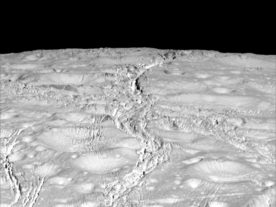For the first time, an international team of researchers has discovered a cosmic cocktail maker hurtling through space at a speed of around 21.8 kilometers per second.
The researchers discovered that Comet Lovejoy is pumping out large amounts of the same kind of alcohol (ethyl) used in alcoholic beverages and a type of sugar into space.
Outlining their findings in a paper published recently in the journal Science Advances, the research team found that the booze-producing ball of ice and rock is spitting out gas that contains some 21 different kinds of organic molecules.
“We found that comet Lovejoy was releasing as much alcohol as in at least 500 bottles of wine every second during its peak activity,” said the paper’s lead author, Nicolas Biver of the Paris Observatory, France, in a press release.
Their discovery provides more evidence to back up a theory that the material needed for the creation of life is carried and delivered by comets.
“The result definitely promotes the idea the comets carry very complex chemistry,” said Stefanie Milam of NASA’s Goddard Space Flight Center in Greenbelt, Maryland, a co-author on the paper.
Comet Lovejoy, which is also known as C/2014 Q2, was discovered in August, 2014 by astronomer Terry Lovejoy from his observatory in Brisbane, Australia.
Astronomers say that the comet, which made its closest approach to the sun, or perihelion, on January 30, 2015, was also one of the most dazzling and active comets to pass us since comet Hale-Bopp in 1997.
The researchers say that the sun actually stimulates the molecules in the comet’s atmosphere, which causes them to glimmer and glow at microwave frequencies that are specific to each molecule’s chemical composition.
So as Comet Lovejoy was making its close encounter with the sun, the team used special microwave detectors that were attached to a 30-meter diameter radio telescope at Pico Veleta in the Spanish Sierra Nevada Mountains, to observe and analyze its microwave glow to determine the composition of the outflow of alcohol, sugar and other organics from the comet.
The European Space Agency’s announced back in July that its Philae lander, from its comet chasing spacecraft Rosetta, detected some 16 complex organic compounds on comet 67P/Churyumov-Gerasimenko.
ESA said that some of the carbon and nitrogen-rich organic compounds detected by Philae play an important role in creating some of the building blocks of life such amino acids, nucleobases, and sugars.
























Comments are closed.